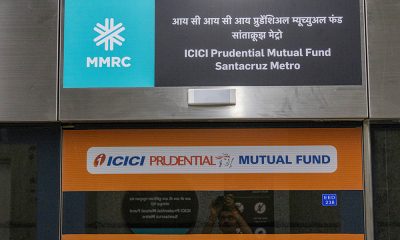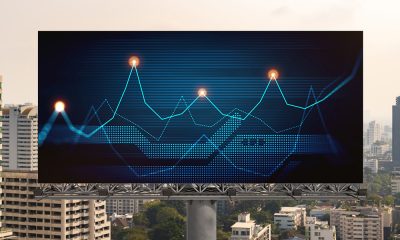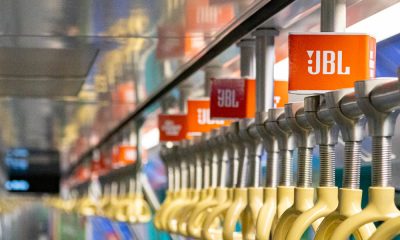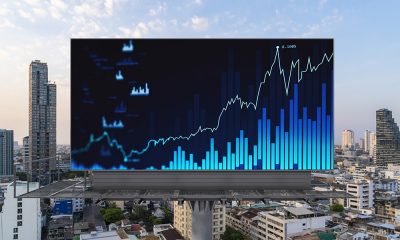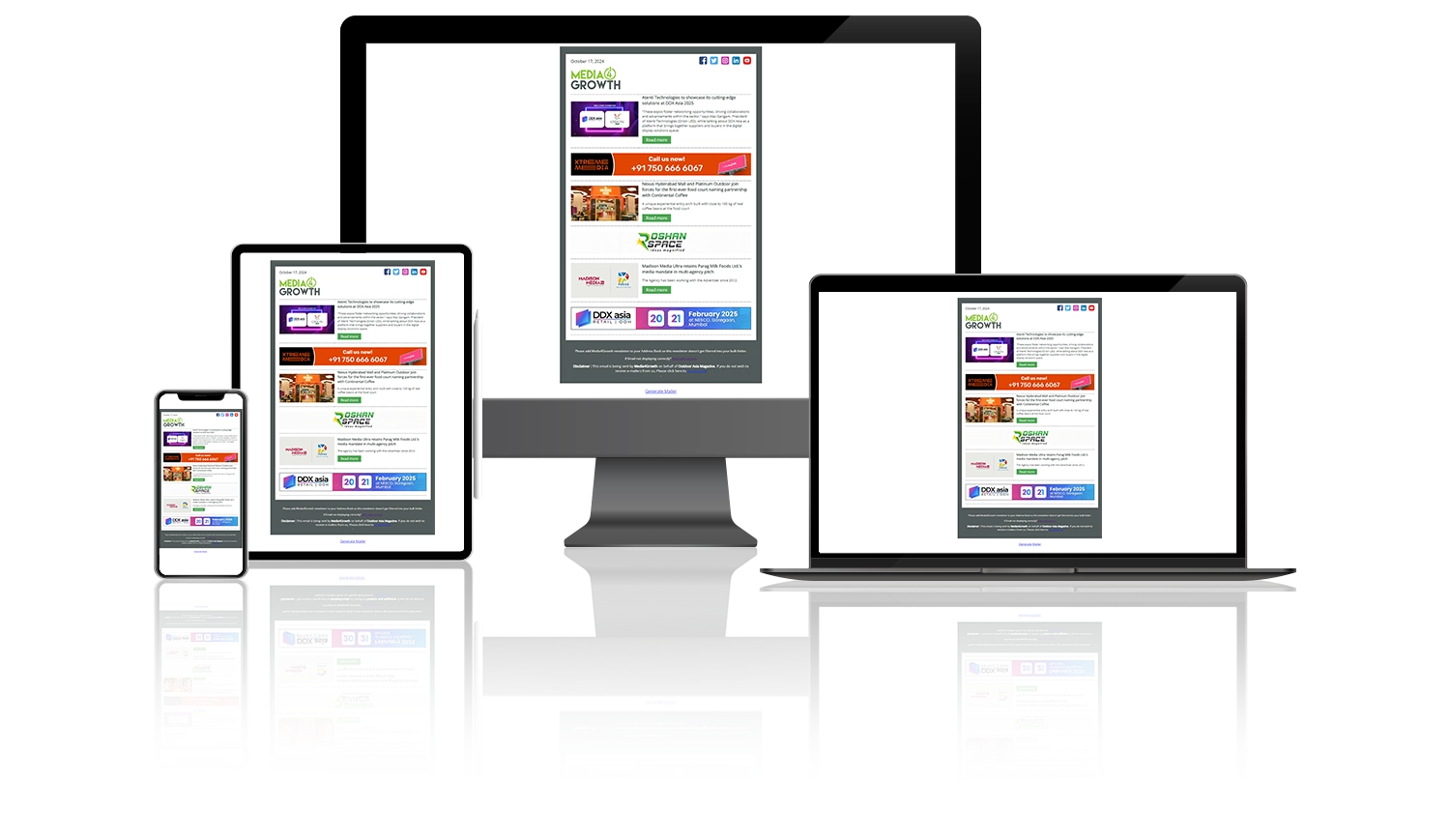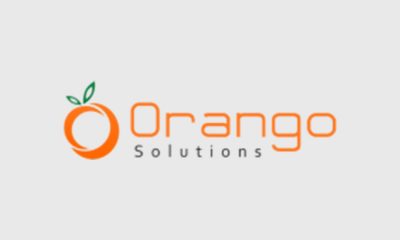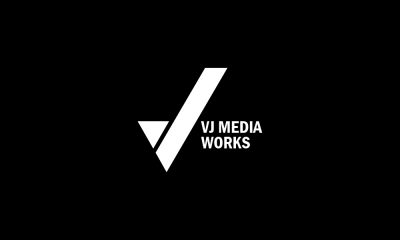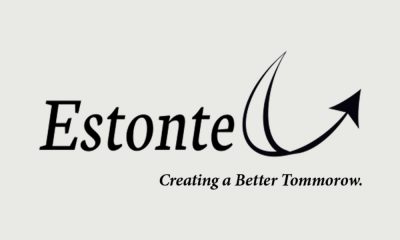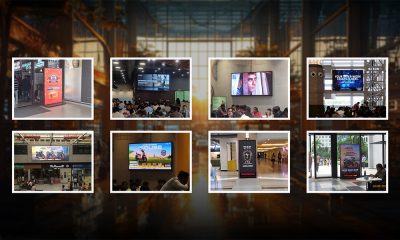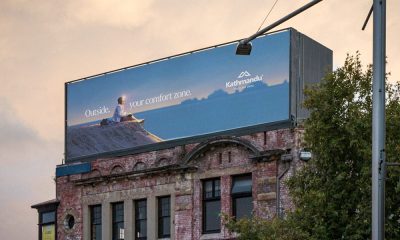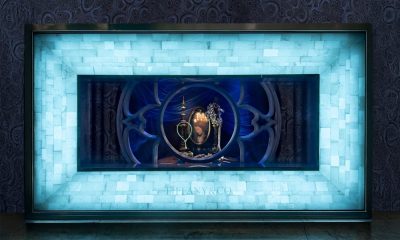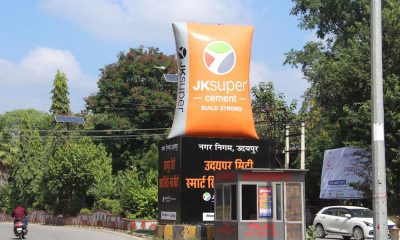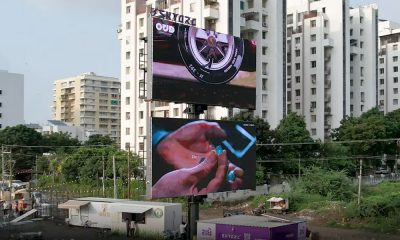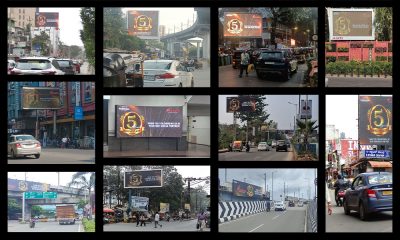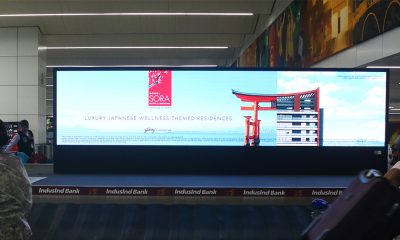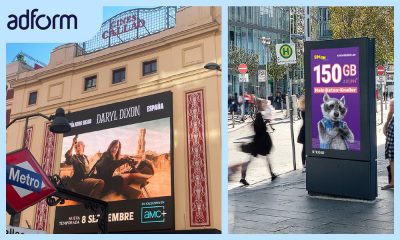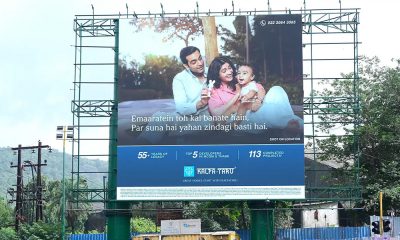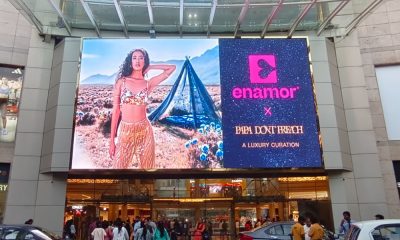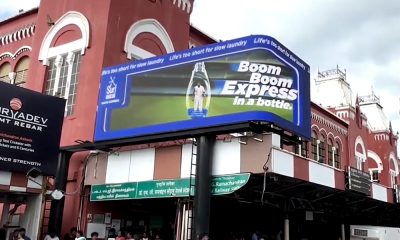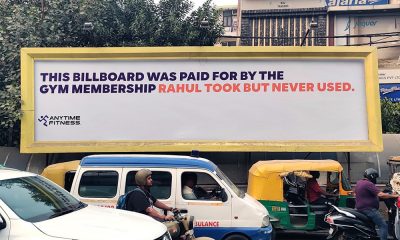Media Planning & Buying
Digital OOH: Sizing up the big picture
DOOH has the makings to make it big, say industry leaders
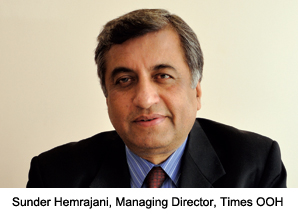 What does digital out-of-home mean?
What does digital out-of-home mean?
In simple words, digital OOH is anything that is digitally shown on any OOH display. DOOH media is a highly beneficial format for advertisers who seek to engage with consumers in a highly interactive manner. DOOH networks typically feature independently addressable large format billboards, screens, kiosks and such which may be placed at cafes, bars, restaurants, health clubs, colleges, gas stations, convenience stores, and other public spaces. Commonly it is also referred to as Digital Signage.
DOOH is distinctly made up of at least two individual categories: Digital Signage (which includes electronic billboards) and Digital Place-based Content Networks. The first one is found on road-sides, and we consider them as “glance media” opportunities for advertisers targeting mass audiences. The second category, of which we consider captivate network to be a part, targets niche audiences in a particular venue and provides customised content and promotions for that channel.
Indian DOOH Advertising
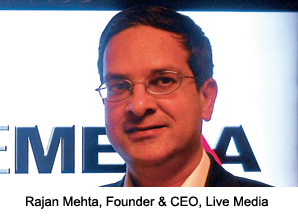 According to industry experts, although Digital Outdoor Advertising has been happening in India for some time, it is still at a very nascent stage. Certain research findings suggest that outdoor advertising in India is set to grow by 17 per cent within 2015. Though the economic slowdown had its effect globally, in India, the industry has spotted the immense potentialities this media can leverage. In the last three years DOOH spends have visibly gone up in the malls and airports. The medium now needs large investments.
According to industry experts, although Digital Outdoor Advertising has been happening in India for some time, it is still at a very nascent stage. Certain research findings suggest that outdoor advertising in India is set to grow by 17 per cent within 2015. Though the economic slowdown had its effect globally, in India, the industry has spotted the immense potentialities this media can leverage. In the last three years DOOH spends have visibly gone up in the malls and airports. The medium now needs large investments.
Sunder Hemrajani, Managing Director, Times OOH, says, “Digital needs large investments and due to uncertain economic environment, companies were not spending and conserving resources. As the sentiments are improving, this would change. Times OOH is already ahead of the curve with investments in Delhi and Mumbai Airports. In addition, we are now pioneering digital in Metro through the Mumbai Metro contract.
Digital OOH being a targeted option for advertisers, the demand for the medium is growing and this will help the media to grow. Investments in DOOH infrastructure will certainly aid the whole ecosystem. Rajan Mehta, Founder & CEO, Live Media, while sharing his thoughts on the medium’s growth prospects, explained, “It is a known fact that as prosperity comes in, people spend less time at home and more outside in places like coffee shops, clubs, restaurants, gyms, salons, hospitals and even offices where they work harder and longer. When you couple an improvement of physical infrastructure with this, it definitely makes a strong case for Digital OOH as the basic purpose of media is to reach out and engage with people in places where they are spending increasing amount of their time and Digital OOH helps you do precisely that.
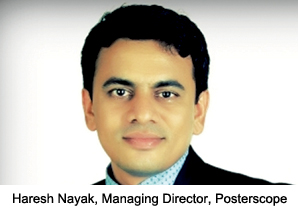 Haresh Nayak, Managing Director, Posterscope, shares, “In my view Digital OOH is beyond just enabling infrastructure. It is about the right content and context and apt execution. Anyhow, the latest developments like the new terminal at Mumbai’s international airport and the Metro service having started have ushered in interesting media opportunities. How digital OOH can be weaved into these places is a prerogative of the OOH community.
Haresh Nayak, Managing Director, Posterscope, shares, “In my view Digital OOH is beyond just enabling infrastructure. It is about the right content and context and apt execution. Anyhow, the latest developments like the new terminal at Mumbai’s international airport and the Metro service having started have ushered in interesting media opportunities. How digital OOH can be weaved into these places is a prerogative of the OOH community.
DOOH technology: Not really a showstopper
India is nicely positioned in terms of contributing to this field as the country has raw talent, engineering capabilities, software manufacturing facilities. What is required is that various related industries need to come together and work for a mutually beneficial entity which will involve multiple companies to improve the digital equipment needed for DOOH.
The technology which is required for the DOOH to work, may be divided into two aspects, one is the software and the other the hardware. In India the software solution industry has reached considerable heights but the other aspect which involves the screens or display equipment like high definition boards mainly come from East and South East Asian countries like China, Japan, Taiwan, and South Korea. These countries have huge manufacturing units for these hardware products and even the European and American countries are importing digital equipment from these countries.
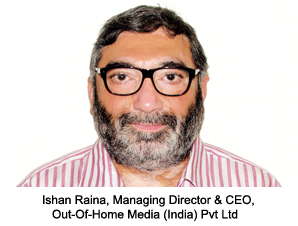 How to bridge the technology gap in the country? Mehta says, “As India today is considered as a global leader in IT, its strengths are commonly seen in the software development and services area. It is the new-age media which the advertisers are focusing on to reach out to their targeted base. Though, for getting the right kind of infrastructure still the industry players continue to depend on the global players regarding hardware equipment but our talent can certainly help in developing an appropriate cost effective solution.
How to bridge the technology gap in the country? Mehta says, “As India today is considered as a global leader in IT, its strengths are commonly seen in the software development and services area. It is the new-age media which the advertisers are focusing on to reach out to their targeted base. Though, for getting the right kind of infrastructure still the industry players continue to depend on the global players regarding hardware equipment but our talent can certainly help in developing an appropriate cost effective solution.
On this, Ishan Raina, Managing Director & CEO, Out-Of-Home Media (India) Pvt Ltd, says, “With more belief and acceptability in the medium the next logical step would be usage of technology to give a holistic touch and feel experience to the consumers, but it is still early days. OH TV is still a consumer medium and not a technology medium. Though with technology and activation teams partnering, it has the scope of becoming far more interactive and consumer friendly. For example, the moment you see a pizza ad on the screen you have the option of ordering pizza from the interactive touch screen digital medium. QR codes were introduced globally to help the auto industry but in India it has still not found much success.
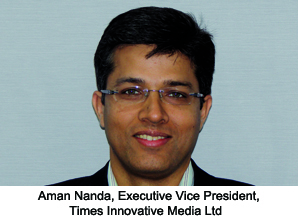 Across the world, digital companies could contribute in their own way to develop DOOH media and look for a positive collaboration to enhance the medium’s interactivity and consumer friendliness.
Across the world, digital companies could contribute in their own way to develop DOOH media and look for a positive collaboration to enhance the medium’s interactivity and consumer friendliness.
“From the advertising perspective we would want to look at the issue of infrastructure in terms of getting two things right. Firstly, the technology, and the other one is network — both of them are the key elements for DOOH. The evolution has already started from the big cities where the need is maximum and DOOH will be primarily driven by captive audience inside the metros, airports and malls, shares Aman Nanda, Executive Vice President, Times Innovative Media Ltd.
On this, David Wison, Production & Creative Director, Engage Production Ltd, says, “As technology gets cheaper and widely available and gets embedded into any form of advertising (static or moving) with user/customer touchpoints, the capability of a more personal, independent, interactive media increases too. This can be a stand-alone experience with no further network requirement but as soon as the technology is connected (with improving physical infrastructure) the ability to correspond in a more meaningful way with the customer increases exponentially. In less heavily built-up areas in the country, the impact of DOOH interactivity is higher as there is less bombardment as in the city/urban setting.
Getting the Formats Right
 Digital OOH formats typically comprise large formats and small formats. They include outdoor digital OOH and indoor digital OOH. In India there is seemingly scope for all DOOH formats and each can serve a specific communication need and audience. While the outdoor large format helps create an impact and acts in a similar fashion like the billboards, indoor and relatively smaller formats can help create impact as well as engagement. In fact, according to industry leaders, small screen formats are one of the most effective DOOH platforms which works best inside the restaurants, educational institutes, railways etc.
Digital OOH formats typically comprise large formats and small formats. They include outdoor digital OOH and indoor digital OOH. In India there is seemingly scope for all DOOH formats and each can serve a specific communication need and audience. While the outdoor large format helps create an impact and acts in a similar fashion like the billboards, indoor and relatively smaller formats can help create impact as well as engagement. In fact, according to industry leaders, small screen formats are one of the most effective DOOH platforms which works best inside the restaurants, educational institutes, railways etc.
Nayak explains, “Digital OOH is not just about formats like screens, kiosks; Digital OOH is an idea based on the dynamic concept of interactivity and engagement; the idea is to harbour technology marrying with a great idea and creating unforgettable consumer experiences. Digital OOH can be something which simply talks to the consumer through their mobile screens. Thus, the best prospects in the Indian digital OOH space lie in the use of smartphone, use of NFC, RFID, QR codes, and complimenting them with one’s imagination and making Digital OOH relevant and closer to the consumer.
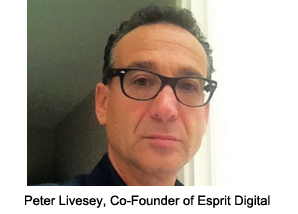 Rishi Choudhury, Head of Technology, Projects & Operations, Times OOH, says, “It is a common practice that when one talks about large formats it is primarily restricted to LED boards, but here in India when it comes to DOOH we do not see huge digital billboards or hoardings on the highways due to traffic and government regulations. As a solution provider what Times OOH has adapted is a hybrid model, We have installed from fairly large screens to small ones in the airport terminals at Delhi and we have also created a matrix of screens to have a great display impact. In the Mumbai airport we have installed smaller formats like kiosks and touch screens which we hope will have a positive result. Thus, when it comes to the specific large DOOH formats it is mostly present indoor and not outdoor due to safety issues.
Rishi Choudhury, Head of Technology, Projects & Operations, Times OOH, says, “It is a common practice that when one talks about large formats it is primarily restricted to LED boards, but here in India when it comes to DOOH we do not see huge digital billboards or hoardings on the highways due to traffic and government regulations. As a solution provider what Times OOH has adapted is a hybrid model, We have installed from fairly large screens to small ones in the airport terminals at Delhi and we have also created a matrix of screens to have a great display impact. In the Mumbai airport we have installed smaller formats like kiosks and touch screens which we hope will have a positive result. Thus, when it comes to the specific large DOOH formats it is mostly present indoor and not outdoor due to safety issues.
DOOH formats also include projection mapping — which is basically a night view solution. LED screens that are used for day view are all imported. This is an area where the country needs to enhance its R&D and product innovation. Due to high costs, clients are somewhat sceptical about spends on DOOH as they are not sure if they will get enough media or not though the chances of getting ROI is maximum in DOOH.
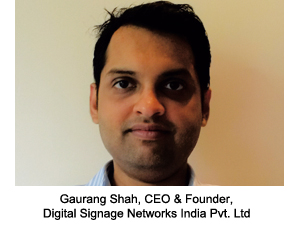 Raina says, “In the Indian digital space format, the LCD screens placed at comfortable viewing distance is the most popular one. It is the repeated nature of reaching out to the consumers in this outdoor format that strikes a chord with the consumer. The larger displays (eg at airports) are seen once, only when they are travelling, hence they fail to increase recall and additional reach. However, large formats also are a great medium.
Raina says, “In the Indian digital space format, the LCD screens placed at comfortable viewing distance is the most popular one. It is the repeated nature of reaching out to the consumers in this outdoor format that strikes a chord with the consumer. The larger displays (eg at airports) are seen once, only when they are travelling, hence they fail to increase recall and additional reach. However, large formats also are a great medium.
Globally, companies have taken strident steps in the DOOH space. For instance, Nokia for its Lumia product launch created a DOOH projection on a 40ft high building in London which became talk of the town.
Giving a global perspective, Peter Livesey, Co-Founder of Esprit Digital, says “I agree that large format LED roadside billboards do seem to get the lion’s share of any publicity in our industry. However, I am pleased to say that the world seems to be waking up to the benefits of smaller LCD multi-screen networks. The applications are far more diverse, often very complicated to design and install, but in the right locations they can be extremely powerful to a captive audience and as a consequence these networks have become more interesting to the media. Notable examples include Westfield Stratford City which was a 100 per cent digital screen site with 100s of LCDs throughout the complex and for that we won the AV Digital Project of the Year in 2012. Likewise, when we launched our escalator panels on London Underground, they won the Campaign Magazine’Outdoor Innovation of the Year’ award. So I think the best projects with the right profile can still get recognised even if they aren’t huge outdoor LEDs. I think the formats that are currently gaining the most traction are escalators/lifts/walkways in mass transit environments, multi-screen video walls and freestanding pods in retail and full outdoor sunlight readable digital posters for venues and advertising applications, including bus shelters.
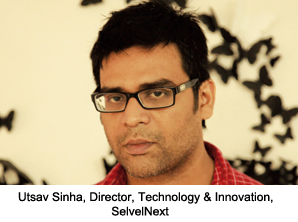 While Wison believes, “Smaller formats will see the biggest and quickest growth: Embedded displays – for instance, in gas stations/petrol pumps, pop up displays in retail and ATMs – where the message is one to one rather than crowd focussed is a growing area. If you can capture some personal details, messages can be even more focussed and relevant to the receiver. Mobile apps where the user agrees to share their details and location will become more prevalent to trigger direct communication which is specific to their whereabouts – be it in-store or on-street.
While Wison believes, “Smaller formats will see the biggest and quickest growth: Embedded displays – for instance, in gas stations/petrol pumps, pop up displays in retail and ATMs – where the message is one to one rather than crowd focussed is a growing area. If you can capture some personal details, messages can be even more focussed and relevant to the receiver. Mobile apps where the user agrees to share their details and location will become more prevalent to trigger direct communication which is specific to their whereabouts – be it in-store or on-street.
In general, the OOH advertising industry feels that though DOOH gives flexibility, immediacy and interactivity, a single standard format will not provide good results. A balanced mix of small and large display screens will ideally help the brands to roll out promotional campaigns. Weaving in relevance, right content, right technology and engaging ideas presented through correct format will leverage the DOOH media.
In this context, Hemrajani says, “In Delhi Airport we have more than 200 screens and we are putting up around 300 screen in Mumbai Airport and we are really optimistic about all these moves. One has to understand the right format, location, TG and the technical aspect to make DOOH campaign a success.
Creating Content for DOOH
 For effective DOOH advertising, content is the ultimate game changer. India has a long legacy in mastering the art of content creation and developing that for any media. Designing content for DOOH advertising is not the same as designing content for traditional media, such as, print, radio or television, because DOOH can connect with consumers wherever they are and convey the targeted communication.
For effective DOOH advertising, content is the ultimate game changer. India has a long legacy in mastering the art of content creation and developing that for any media. Designing content for DOOH advertising is not the same as designing content for traditional media, such as, print, radio or television, because DOOH can connect with consumers wherever they are and convey the targeted communication.
“A thorough research in preparing the content which will present the effectiveness of the media in a positive manner is the key to Digital OOH and India can certainly prepare it. Interactivity through engaging content also depends on the location of the media. Whether the site where DOOH is deployed is correct for that TG or not becomes the deciding factor for the brand, shares Gaurang Shah, CEO & Founder, Digital Signage Networks India Pvt. Ltd.
Mehta adds, “LiveMedia has invested heavily in content which is engaging, entertaining and educative. This has given the brands competitive advantage and increased audience viewership.
Successful digital outdoor media content has to be’gummy’, so that its intended audience has a definite reason to take a glance at it.
“The brands here are not yet successful in exploiting the media so far due to lack of engaging content. Interactivity is of two types — it may be active or passive. Active interactivity may be mixed with social media or apps and passive interactivity mainly include showcasing the product and its offerings, but we are observing that even the global brands here have not made the content engaging enough which can very well utilise this technology. Times OOH has a dedicated team which helps in customising the content and gives suggestions to the clients to make it more consumer friendly, opines Rishi Choudhury.
For brands it is essential to have insight into why people are at a venue, how long they are there, what they are doing right before they arrive and what they are doing after they leave to prepare engaging content.
“In DOOH it is the technology and the content which has to amalgamate in a big way and here at SelvelNext it is our constant attempt to achieve that. With augmented reality we are trying to build up that rapport with the clients for their TG so that the digital platform is well utilised, giving an over the top mileage to the advertiser. In India, for making the content more interactive a constant integration of 3D artists, graphics designers, and technical expertise — all should be united to create something new and phenomenal, says Utsav Sinha, Director, Technology & Innovation, SelvelNext.
Gallen Yip, Research Director, Asia Pacific, Kinetic Worldwide, says, “Indian customers and consumers are empowered today like never before. They can buy nearly anything, anywhere, any time, and get the best deal. This is the new generation of consumers we need to engage today. So what to do? We think embedding best-in-class interactivity features is just a part of the solution to increase receptivity. To engage the man/woman on the street, we will need to carefully curate and bring 3 aspects slowly together. These will include:
- Data: ability to listen and understand the needs, desires and mind-sets of out-of home audiences, based on their actual behaviour and out of home journeys
- Creativity: ability to make the engagement and relationship stimulating
- Technology: ability to develop a unique and agile outdoor experience.
Yip further shares the example of The Cannes award winning campaign from British Airways (BA) which brings the point home. “Think about data; relevant screens locations, flight path and times of BA. Think about Creativity; Serve BA ads with precise locations, timing and content daily (flight destinations, live pricing, special offers and weather information. Think about technology; special ADSB antenna to obtain every aircraft’s transponder data (planes location, speed, altitude and call-sign) and height cloud to trigger billboards to display BA ads every time a BA plane flew overhead.
On What was the empowered experience delivered, he says, “I believe it’s the magic of rediscovering what it means to fly again for adults! The results speak for themselves already. This campaign increased traffic to BA.com by 75,000+ unique visits, received over 1 million YouTube views, and had a global reach of over 350 million, fuelled by pervasive multi-screen behaviours and social validation. Brands that succeed in crafting a direct response from the man/woman on the street are likely to reap the benefits.
In the international markets several new experimentations are going on to make the DOOH platform more interactive and consumer friendly through magnificent content ideas.
Livesey shares, “We have just completed a national rollout of digital in Virgin Media sites in the UK and one of the key formats was large-format multi-touch portrait video walls. These behave more like an iPad than previous versions and are far more engaging and responsive – in the right locations these are a game-changer for consumer interaction and provide a wealth of usable’live’ data for marketers. The integration of sophisticated cameras within many digital posters is also improving customer engagement with several software programs and now allowing people to change their clothing and accessories onscreen and then share the images with their friends before purchasing. Content is absolutely key here and there have been some great examples recently of content created for screen networks going viral on the internet (for example, Apotek hair-raising subway advertisement in Stockholm and the Pepsi Max unbelievable bus shelter in London).
“The evolution in the industry is about the move from passive white-labelled experiences into more personal interactive experiences – this can only be delivered through relevant content. To get to develop and deploy relevant content, companies must identify the key messages of the campaign, gain an understanding of the specific market and then glean as much information about the customer as possible to tailor the experience to make it more meaningful on an individual basis, says Wison.
The content for DOOH must essentially hit only the’moral of the story’.
City Beautification & DOOH
City beautification projects are an integral part of the growth of DOOH advertising globally and for this to work in India a very strong partnership between the media owners and Government body is required. A reformed collaborative attitude is to be taken to change the situation which will surely give an impetus for growth to the entire industry.
Sinha shares, “DOOH can really play a vital role in city beautification and our civic bodies should try to include that while planning such projects. The solution providers will have to educate the planners for this, a DOOH platform may be used in multiple ways, may be for creating awareness on certain rules and regulation from municipal authorities, during public events and at the same time the advertisers can get greater mileage.
While asked that what sort of support they need from the corporation, Fahd Hussein, Director, Creative & Digital at SelvelNext shares, “Let’s take the example of Seven Point Crossing at Park Circus, Kolkata which is a very cluttered zone. DOOH can transform the whole place with the help of high-end technology and projection mapping but the Government and the advertisers have to mutually agree to take such steps. These initiatives will help in information dissemination, beautify the landscape and make the campaigns more interactive and engaging through use of augmented reality.
Today with traditional billboards the city skyline is becoming cluttered and perhaps DOOH is the next generation of outdoor media which can ameliorate this situation.Tech Parks may prove to be great locations where DOOH can establish big footprints.
What will drive the advertisers?
“Globally, all new markets for digital are initially driven by their advertising industry because screen technology is not cheap to implement and companies need a quick ROI. The good news is that the major brands love digital for a multitude of reasons – impact, creativity, flexibility, immediacy, etc. – and they do not want to buy time on a just a few screens in limited locations. They want to make digital-specific creative campaigns that they can deliver to the widest possible audience. This, coupled with a decrease in the cost of the technology and the contemporary enclosure designs which are now seen will drive DOOH forward into more new markets on a much larger scale and almost certainly into more different types of location, says Livesey.
Mehta observes: “I think there is a symbiotic relationship wherein beautification will not only give an impetus to digital OOH but will also help to beautify the cities — adding a colourful feast and zest to them.
Brands Engaging With DOOH
Brands like British Airways, Diet Coke, Twitter, Nokia and Toyota have globally leveraged the advantages of this media to connect with their consumers in a more engaging manner. But when it comes to luxury and high-end brands they are yet to be tapped globally for DOOH advertising.
Hemrajani shares in this regard, “The luxury brands have got very niche customers and thus they have a very specific requirement. They are more interested to get media in such locations where they are present like the luxury malls or high-streets. Like, for example, we have created certain screens for the high-end brands in the airport which is giving a good mileage to these products. They have a budget which they spend only on focussing where really their customers are. Thus given the opportunity the luxury brands will become one of the most important advertisers for DOOH.
In this regard, Raina feels, “If we are relevant to the medium and we can prove to the advertiser that we are reaching out to his TG – premium SEC A audience, we can definitely have more luxury brands advertising on this media. It is about understanding the Fourth “P of marketing – Place. If DOOH is present at swanky, high-end places which are frequented by SEC A audience, definitely luxury brands can be brought into the OOH fold. At OOH Media we have a home grown pool of talent. The key to success here is to realise the advertiser’s need and to provide him with a solution choosing only clusters relevant to the brand. As long as we realise that we are a natural split-run medium and not a centralised server based media like channels, advertisers will buy our medium and repeat the usage across brands.
A wider network, correct location and variation in indoor DOOH platforms would attract luxury brands as they address a very niche segment and in fact digital OOH today can help by ensuring the presence of luxury brands through different formats in clubs, high-end salon, airports, cafes and such.
Internationally how the high-end brands are leveraging this media? Livesey says, “From the minute we launched Digital Escalator Panels on the metro, we could see a paradigm shift in the quality and diversity of brands looking to embrace the medium. When the first mall networks were deployed we started seeing the fashion houses advertising on screens in the public areas in conjunction with a proliferation of screen technology within their own stores. This is a trend I can only see expanding across other digital platforms as they become more widespread.
However, there are challenges to luxury brands advertising on DOOH media. Sinha says, “Luxury brands are right now not leveraging this media because the problem lies in the kind of DOOH we are using here. There are various restrictions on this media and the medium itself is in its early stage of growth. Once DOOH reaches that point where a crisp format is available, luxury brands will definitely come in as there is great potential and the advertisers can really choose to showcase different communicative messages simultaneously in 20 different locations
Gallen shares, “While thinking about luxury products legacy of print and outdoor advertising, it is largely dominated by brand-centric messages. The ads typically exude emotions, one that successfully convey a brand story, sell a brand image and promise an experience (of owning it).
They make us feel’something’ at the end of the day. To date, I think that something is known as desire to own it.
“Let me try to put’desire to own it’ into today’s context. At the end of 2013, luxury generated $1.7 billion in India, accounting for about 0.5 per cent of total global luxury goods markets, according to Bain & Co. While this market is still relatively small compared to their BRIC neighbours (China and Brazil), I think this is still a worthy category to expand into for DOOH vendors. Apart from larger-than-life brand building, we are increasingly seeing advertisers elsewhere using DOOH as an informational touch point for their target audience, he says.
Some of these applications include:
- Extension screen to view commerce content (including mobile apps and mobile websites)
- Crowd source style/design tips from brand fans to enhance product localisation and mix and match (how to wear it better)
- Augmented in-store experiences; virtual showroom to show customers how they will look like with the need to go into the dressing room, RFID payment check-out, etc.
- Interactive event marketing; live stream exclusive global brand events and provide participation/gamification elements.
“If we are serious in reaching out to luxury brands with DOOH, the industry will also need to start taking a view towards a more geographically consistent spread of these screens (big or small) to reach these emerging target segments. To get these luxury brands on board DOOH, media vendors will need to start demonstrating how their digital networks score in terms of scale (number of relevant locations), coherence (targeting options) and engagement capabilities against the potential luxury customer, says Yip.
Global Scenario vs Indian Reality
DOOH is perhaps the fastest growing media in the US and China but in India it is still in its infancy. With innovations gaining high popularity in the OOH field, the digital platform could potentially prove its effectiveness in a developing market like India.
Sanaya Mehta Vyas, Director, SelvelNext, observes that “India is a country which has equal talent when it comes to DOOH. For example, recently I was in Prague for an event and the way projection mapping happened there, SelvelNext is offering the same solution to the clients. Also, as I attended the World Outdoor Congress in Vienna, CBS was talking about augmented reality which is in fact what SelvelNext is planning to do. It is just that clients needs to understand and educate themselves on the fact that DOOH can give equal if not better results here in India.
Hussein from SelvelNext adds, “Independently there are many organisations in the country that are doing very innovative work in this field but they need collaborative support from the clients, government and the big solution providers who would like to experiment with novel technologies. The brands are being little skeptical as the civic restrictions abroad are lesser and that seems to be the issue which Indian DOOH industry is facing. Also, it depends on the factor of market segregation. For example, a campaign in Amsterdam will hit the audience in a different way than in Kolkata but in a country like ours which is so diversified, with modern language packs we can showcase the same product campaign in ten different places in various regional languages at one go and the brand can target their specific group as per their need. Brand marketers will have to keep these aspects in mind and utilise the media in their own favour.
“The difference lies in the approach. We are too commodity centric when it comes to digital OOH; we treat them like we treat our billboards. Internationally digital OOH is both big LED screens and great technology centric ideas, “says Nayak.
Digital OOH being a relatively new industry will evolve and technology will step in to make it more interactive and consumer friendly. For any new platform, talent is not readily available. However, there has been a good cross-fertilisation of aptitude from TV, outdoors and digital and as a result India now has an interesting pool of technically sound professionals in this space.
In the OOH space brands get an estimated 15 seconds to make an impact on their TG through a mute media thus the content has to be so powerful. Similar results are achievable in DOOH if the correct relevance is established between the media and the need of the brands. It can definitely offer greater mileage and the customer interaction will make it more accessible. Thus India needs to get the model right for DOOH so that the ROI comes in.
Looking Ahead
Currently DOOH accounts for a meagre 2-3 per cent of the overall OOH advertising industry but the players are hopeful that within the next few years when most of the airports get privatised and with the Metro coming up in different metropolitan cities, DOOH will receive a big impetus for growth.
Vyas asserts that as the OOH industry grapples with the challenges of interactivity with consumers and lack of measurements metrics for traditional OOH media, DOOH could serve as the new catalyst for growth.
The need of the hour is concerted action by the OOH industry, a new class of investors, digital technology companies, civic bodies and the advertisers themselves to create a robust ecosystem for DOOH in India.
